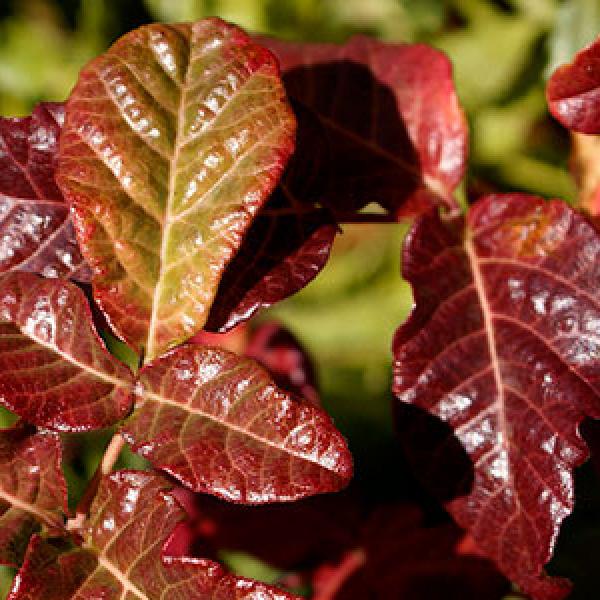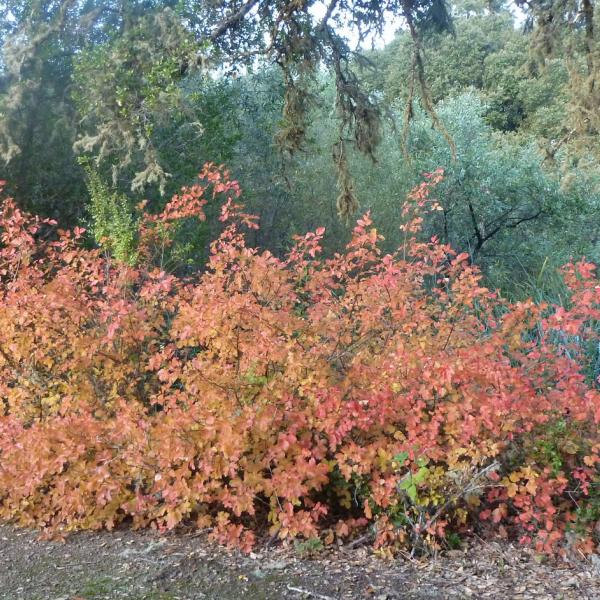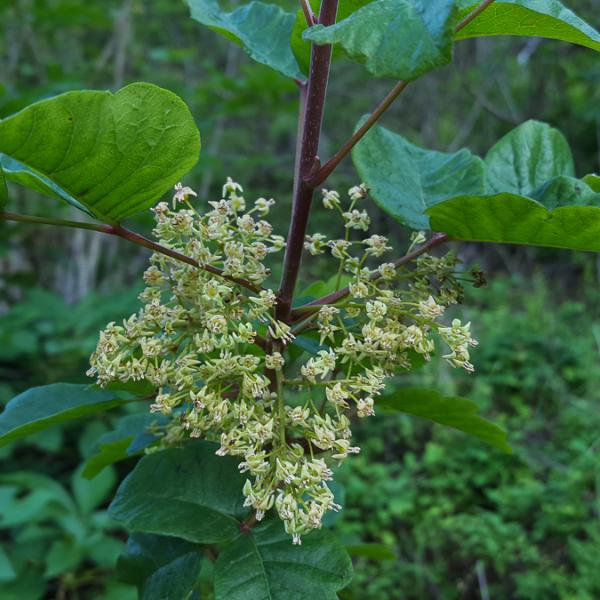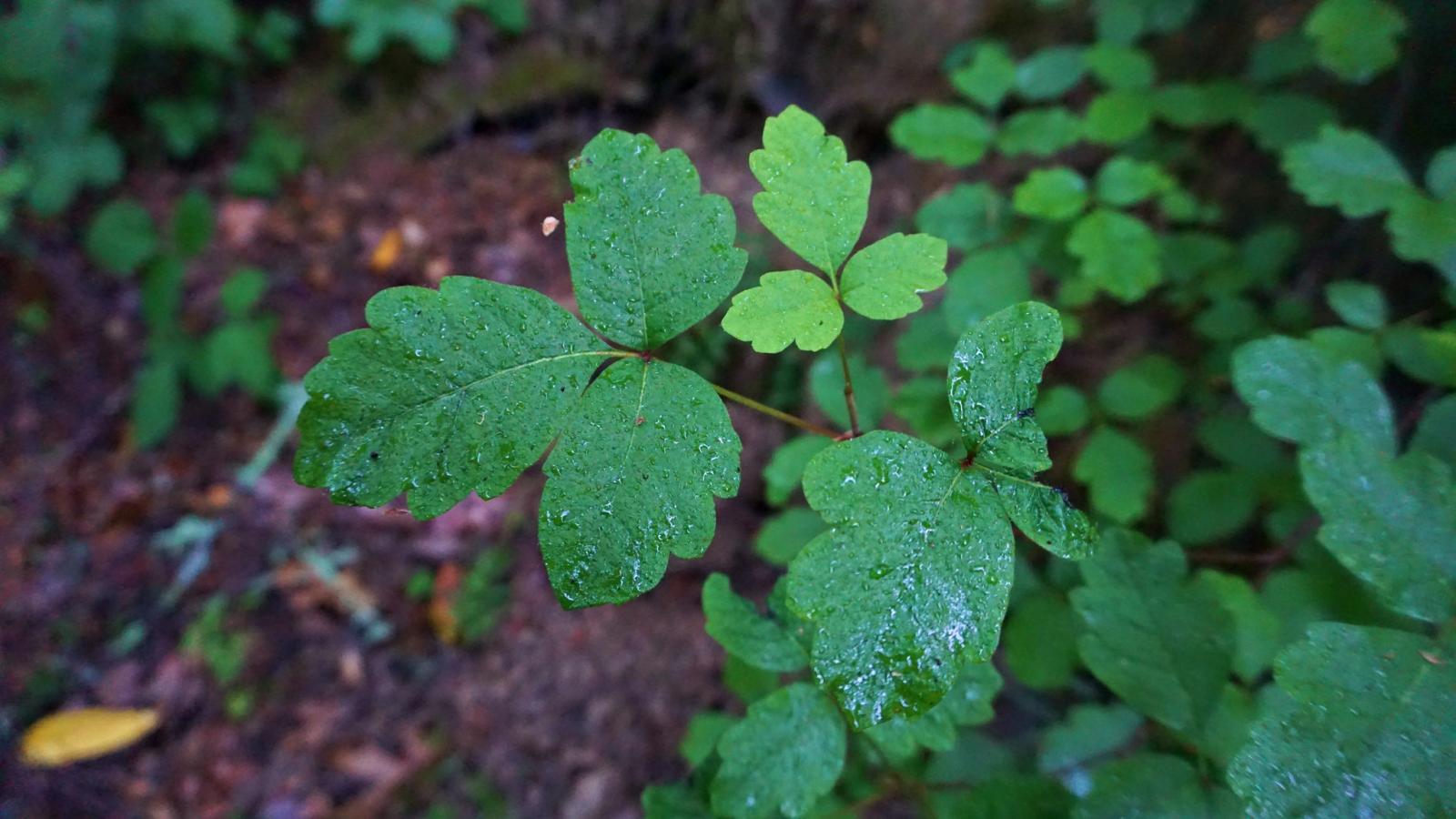The Itch on Poison Oak
Poison oak (Toxicodendron diversilobum), is common throughout California and the northwestern states, and can be found in just about every natural plant community where shrubs or trees are present. Poison oak belongs to the cashew or sumac family and is a close relative of poison ivy (although poison ivy isn’t found on the West Coast).

Identify Trouble
Poison oak leaves generally grow in sets of three (just like the native wild blackberry, but without the thorns). A good rhyme to keep in mind is: “Leaves of three, let them be. If it’s hairy, it’s a berry” (The hair being the thorns, or the soft fuzzy hairs that sometimes grow on the outside of leaves). Poison oak can look different in each season.

The Four Seasons of Poison Oak
- Spring leaves are light, bright green with whitish flowers clustered on the stems.
- Summer brings yellow-green, pink, or reddish colors with small white or tan berries.
- Fall turns berries darker, dried, and wrinkled, and the leaves turn a brilliant scarlet or russet brown before falling to the ground.
- Winter makes all of the leaves drop, leaving only bare sticks, whip-like stems, or climbing vines remaining. Scratch the common myth – you can in fact get poison oak in the winter, as the plant oil is present in the stems and is potent all year round!
Coming in Contact with Poison Oak
- The leaves, stems, and roots of the plant carry an oil called urushiol, a severe, itch-provoking skin irritant to most people. Urushiol is black oil that gives the poison oak leaves their shiny appearance.
- Can you get a rash just by touching a poison oak leaf? The answer is generally no. You most likely won’t break out in an itchy rash unless the plant is damaged, allowing the urushiol to leak out.
- Oils penetrate and become absorbed into the skin within 10 minutes of exposure. Oil will not dissolve in water; it’s as tough as tree sap.
- Wipe exposed skin with rubbing alcohol within minutes of touching. However, if a rash has already appeared, it is too late to use rubbing alcohol and you can actually damage your tissues and make it harder for a wound to heal.
- Use water, any temperature, to clean the area. Do not immediately use soap. Soap gathers and spreads oils to other parts of the skin.
- Shower first with cold water to reduce skin absorption, and then use soap.
- Don’t forget that the oils may remain on clothing or shoes unless they’re washed.
- Pets’ fur may carry the irritating oils too if they wander through poison oak shrubbery and brush against the plant.
Avoid the Itch
Individual reactions to poison oak range from none to severe, depending on the sensitivity of the person and the amount of plant oils they were exposed to. Infected skin will become red and itchy within the first 12 - 48 hours, as plant oils are absorbed into the skin cells. A common reaction to poison oak is for the infection to form a rash with raised blisters. People experience the most severe reaction when the blisters open, or when poison oak is burned and the smoke is inhaled.
It’s a Myth
Often heard: Don’t touch a poison oak rash because it will spread the infection. The truth: It can’t be spread by scratching. The reason it appears to spread is that different parts of the skin may break out at different times.

Fun Facts
- One pinhead of urushiol can easily infect 500 people.
- Deer graze in poison oak thickets and many birds feast on the berries; for them it’s a sustaining friend.
- Native Americans cooked with poison oak leaves, made baskets out of stems, and used the juice to dye basket materials black.
- Mangos are related to poison oak! Some people experience irritation after eating the fruit because the mango peel has traces of urushiol oil.

